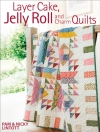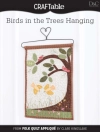The senses in interior design examines how sight, touch, smell, hearing and taste have been mobilised within various forms of interiors. The chapters explore how the body navigates and negotiates the realities of designed interiors and challenge the traditional focus on star designers or ideal interiors that have left sensorial agency at the margins of design history. From the sensually gendered role of the fireplace in late sixteenth century Italy to the synaesthetic décors of Comte Robert de Montesquiou and the sensorial stimuli of Aesop stores, each chapter brings a new perspective on the central role that the senses have played in the conception, experiences and uses of interiors.
Inhaltsverzeichnis
Introduction: sensorial interactions: interior design through the five senses – Marie-Ève Marchand
Part I: Sensory politics
1 Heated bodies: fireplaces and the senses in the early modern Italian domestic interior – Erin J. Campbell
2 Sensitive design: Robert de Montesquiou’s sensorial installations and its condemnation – Benoit Beaulieu
3 Re-assessing Pierre Legrain’s ‘Black Deco’: sensual luxury, primitivism and the French bourgeois interior – John Potvin
4 ‘Brother and I in bed’: queer photography at home in New York, 1925–35 – Alice T. Friedman
5 Conquering the home front: Nazi propaganda and sensory experiences in the German domestic interior 1933–45 – Serena Newmark
Part II: Aesthetic entanglements
6 Into the sensorium: scenes from the dressing room – Louisa Iarocci
7 Site-reading: placing the piano in middle-class homes, 1890–1930 – Michael Windover and James Deaville
8 The Herrenzimmer: masculinity, the senses and interior design in turn-of-twentieth-century Germany – Änne Söll
9 Hands at home? Textures, tactility and touch in interior design – Grace Lees-Maffei
Part III: Sensual economies
10 Forging foam at the 1925 Paris Exhibition – Claire I. R. O’Mahony
11 The stimulating atmosphere of the English public house, c. 1945–75 – Fiona Fisher
12 Interiorising the senses – David Howes
13 Sensorial worlds and atmospheric scenes in Terence Conran’s The House Book – Ben Highmore
14 Aesop’s sensory experience – D. J. Huppatz
Index
Über den Autor
John Potvin is Associate Professor in Art History at Concordia University, Canada












